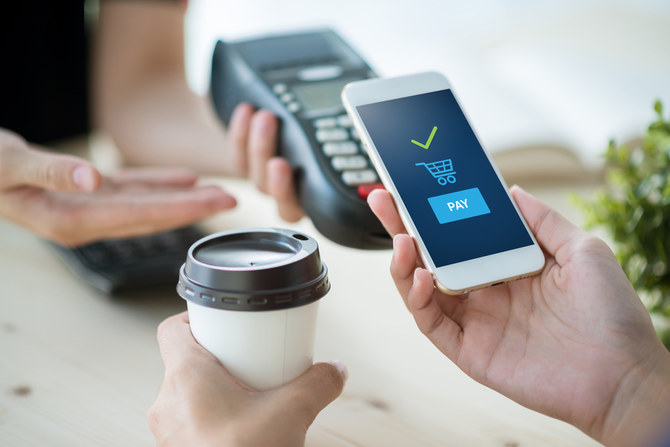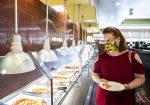After an incredibly difficult 2020, many restaurants are beginning to have hope for the future. As more and more people get inoculated, with President Biden predicting that vaccines will be available to all adults before this summer, the new normal is beginning to come into view. Quick-service restaurant (QSR) chain Noodles & Company, for one, has expanded the following for its off-premises-friendly offerings. In the final quarter of 2020, despite suffering a year-over-year decrease in revenue, the company saw a remarkable 128 percent year-over-year growth in digital sales, with these making 62 percent of total sales, per the latest earnings release.
“Never discount the restaurant sector,” the chain’s CEO Dave Boennighausen told Karen Webster in a recent interview. “It’s the most innovative industry I can think of, and I think it’s actually shown great resilience. The fact that we’re roughly flat versus where we were pre-pandemic — I think ’21 will just be gradual improvement … [I’m] hoping for the new normal to show itself up probably around late Q3 and Q4.”
The new normal, however, will not be identical to the old normal. Boennighausen predicts that restaurants will see a weaker performance at lunch, a cost-conscious swing away from the “average check increases throughout the industry” seen during the pandemic. He also predicts that restaurants themselves will look different than they did in, say, February of 2020, with “fewer areas within a restaurant where you could see any kind of communal contact.” One of the more dramatic changes this will include, compared to pre-COVID dining, is that plexiglass partitions will remain a part of the restaurant experience “for the next year or two.”
The Lasting Appeal Of Digital
While the giant uptick in Noodles & Company’s digital sales might not be sustainable, Boennighausen nonetheless believes that digital channels will continue to make up a huge portion of total sales.
“We think digital is very, very sticky,” Boennighausen said. “The top 50 percent of restaurants that are above our average for dine-in are doing about 5 percent better than those that are in the bottom half … The story is that digital is sticky, that even as people started to go into the restaurants, we didn’t lose any of the digital sales.”
For one thing, Boennighausen maintains, consumers prefer the experience of digital transactions. “They’re simpler; they’re faster … A computer’s never going to get an order wrong.” Especially for a chain like Noodles & Company, which tends to attract a younger base, digital sales could well remain strong.
While the chain tries, through marketing and special promotions, to encourage customers to order through its own sales channels, it also believes it is important to preserve relationships with third-party aggregator users. Boennighausen reflected, “DoorDash, Uber Eats, and those folks, especially those two, they’ve done a very good job of getting brand loyalty into their own platforms. So it’s not without risk that people could just abandon the whole Noodles experience and go with somebody else.”
In fact, while some industry leaders predict that the aggregator model will be unsustainable in the long term, Boennighausen predicted, “There will eventually be some kind of equilibrium that’s a win-win. Right now, our intent is to work with those third-party providers, as well as with our consumers, to try to identify those wins.”
Next-Gen Kitchens
After working with industrial engineers in 2018 to identify inefficiencies in “500 different tasks that a team performed during the course of a day” and after implementing new, more time-effective technologies, Noodles & Company was able “to capture about seven hours per restaurant per day.” Additional food prep technologies being rolled out this year will bring “another couple hours of labor savings,” he said.
“Our team’s already in process of developing what’s the next kitchen of the future,” Boennighausen said. “Because we think there’s roughly a three-year cadence, where you’re evaluating what new technologies exist today that didn’t exist three years ago, what new equipment exists today that didn’t exist three years ago, [and] how has our operating model changed.”
To keep up with this three-year turnover period, the company is implementing ghost kitchens, both to try out the off-premises-only model in its own right and to use this technology to test new markets in a manner that poses “less risk than the full brick-and-mortar.” Boennighausen explained, “What the ghost kitchen allows you to do is really build brand awareness, start to create that infrastructure in a very low-cost way, in a very quick way … this is a good opportunity for us to get some great learnings on, ‘How do we enter a new market?’”
Recalibrating To A Pre-COVID Mind Frame
Last year was, of course, in the most literal sense, an exceptional year. Routines were thrown into disarray, and consumers’ behavior was difficult to predict and incredibly variable across different markets and demographics. Accordingly, Boennighausen explained on the company’s recent earnings call, “While we will continue to report our 2021 comparable restaurant sales versus 2020, we will also be providing a comparison of average unit volumes relative to 2019, beginning with our Q1 earnings call.”
Three other restaurants have adopted the same system, Boennighausen told Webster, adding, “We just think it’s more informative and a more accurate way to look at things.” By measuring sales against the pre-COVID-normal, we will begin to see how the post-pandemic period compares to the restaurant industry as we knew it, rather than only the restaurant industry at its most volatile point.
Article Credit https://www.pymnts.com/





